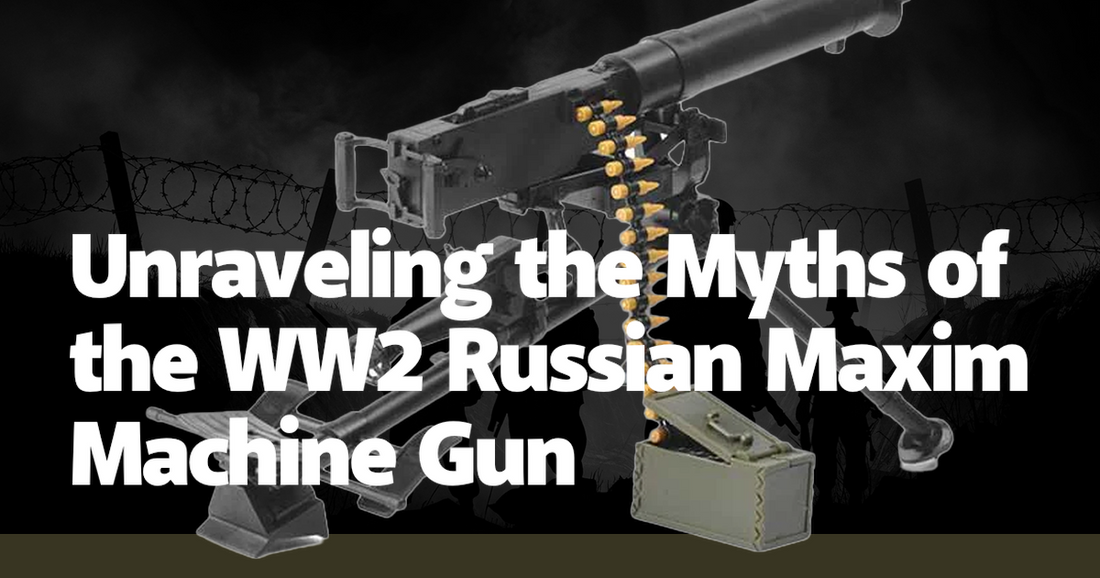The Russian Maxim machine gun, a formidable weapon of World War II, stands as a symbol of Soviet resilience and ingenuity. Often shrouded in myths and misconceptions, this machine gun's true story is one of innovation, adaptation, and relentless utility on the Eastern Front. Contrary to popular belief, the Maxim was not a relic of a bygone era but a crucial component of Soviet firepower that played a significant role in the Red Army's victories against the Axis forces. This article delves into the many facets of the Maxim machine gun, unraveling the myths and uncovering the truths that defined its legacy.
One prevalent myth is that the Maxim was an outdated weapon by the time World War II erupted. Originating from the late 19th century, the Maxim design was indeed old, but the Soviet version, the PM M1910, was far from obsolete. The Soviets had made substantial modifications to the original design, including a wheeled mount for mobility and a distinctive water-cooling system that allowed for sustained fire. This adaptation was crucial during the grueling battles on the Eastern Front, where the ability to maintain a high rate of fire without overheating was a game-changer. The Maxim's robust construction and reliability under harsh conditions made it a favorite among Soviet troops.
Another misconception is that the Maxim was cumbersome and unwieldy, limiting its effectiveness in dynamic combat situations. While the gun and its mount were indeed heavy, Soviet soldiers developed innovative tactics to maximize its potential. For instance, during the Battle of Stalingrad, Maxim guns were strategically placed in fortified positions, creating deadly kill zones that decimated advancing German troops. The gun's ability to fire continuously for extended periods provided a psychological edge, demoralizing enemy soldiers who faced its relentless barrage. The Maxim's presence on the battlefield was a testament to Soviet tactical ingenuity and the determination to utilize every available resource to its fullest potential.
The myth that the Maxim was solely a defensive weapon also falls short of the truth. While it excelled in defensive roles, the Maxim was equally effective in offensive operations. Soviet forces often used it to provide suppressive fire during assaults, pinning down enemy positions and allowing infantry to advance. The gun's versatility was showcased during Operation Bagration in 1944, where Maxim-equipped units played a pivotal role in breaking through German lines. The combination of heavy firepower and strategic deployment allowed Soviet forces to achieve rapid and decisive victories, dispelling the notion that the Maxim was limited to static defense.
One of the most enduring myths is that the Maxim was inferior to its German counterparts, such as the MG34 and MG42. While it is true that German machine guns boasted higher rates of fire and more advanced designs, the Maxim's reliability and ease of maintenance gave it an edge in the harsh conditions of the Eastern Front. The MG42's rapid rate of fire often led to overheating and jamming, whereas the Maxim's water-cooling system ensured consistent performance. Anecdotes from Soviet veterans frequently highlight the Maxim's dependability, with many recounting instances where their lives were saved by the gun's unwavering functionality in the face of overwhelming odds.
The Maxim's role extended beyond the infantry, finding utility in various branches of the Soviet military. Mounted on vehicles, boats, and even aircraft, the Maxim's adaptability was a key factor in its widespread use. During the Siege of Leningrad, Maxim guns mounted on naval vessels provided crucial support to the city's defenders, repelling numerous German assaults. The gun's versatility and reliability made it an indispensable asset across multiple theaters of war, reinforcing its status as a cornerstone of Soviet military strategy.
The human element of the Maxim's story is equally compelling. Soviet soldiers developed a deep bond with their Maxims, often naming them and treating them with a reverence reserved for trusted comrades. This connection was born out of the gun's role as a lifeline in the brutal combat conditions of the Eastern Front. Stories abound of soldiers risking their lives to retrieve or repair their Maxims under fire, driven by the knowledge that the gun's firepower could mean the difference between life and death. This personal relationship between man and machine underscores the Maxim's significance beyond its technical specifications.
The legacy of the Maxim machine gun is a complex tapestry woven from threads of innovation, adaptation, and unwavering reliability. Its story is a testament to the Soviet Union's ability to transform an aging design into a weapon of immense strategic value. By unraveling the myths surrounding the Maxim, we gain a deeper appreciation for the ingenuity and resilience that characterized the Soviet war effort. The Maxim machine gun was not just a tool of war; it was a symbol of Soviet tenacity and a crucial element in the Red Army's path to victory.
In conclusion, the Russian Maxim machine gun's true legacy lies in its remarkable journey from a 19th-century invention to a 20th-century battlefield stalwart. Dispelling the myths that surround it reveals a weapon that was far from obsolete, unwieldy, or inferior. Instead, the Maxim was a versatile, reliable, and indispensable component of Soviet military strategy. Its story is one of adaptation and resilience, mirroring the broader narrative of the Soviet Union's struggle and triumph during World War II. As we continue to study and understand the complexities of this iconic weapon, we honor the ingenuity and determination of those who wielded it in the fight for their nation's survival.

